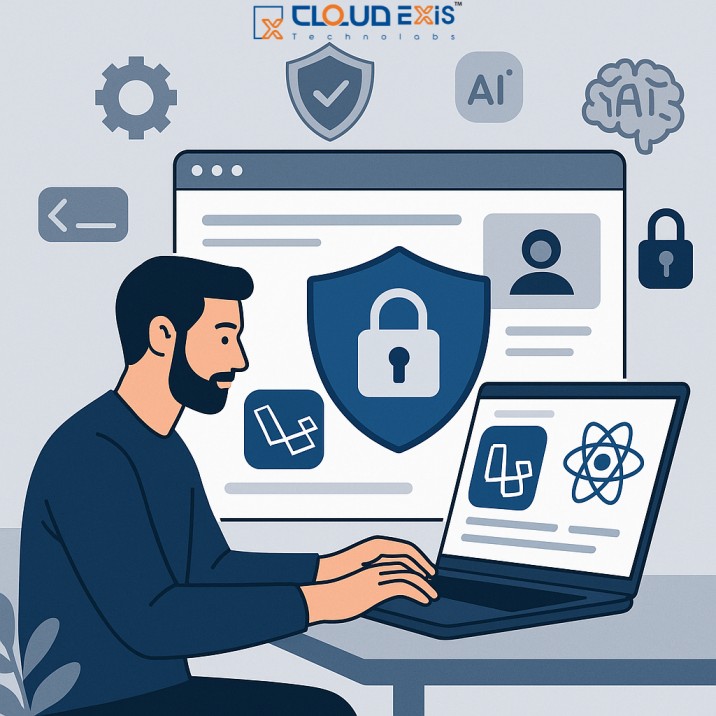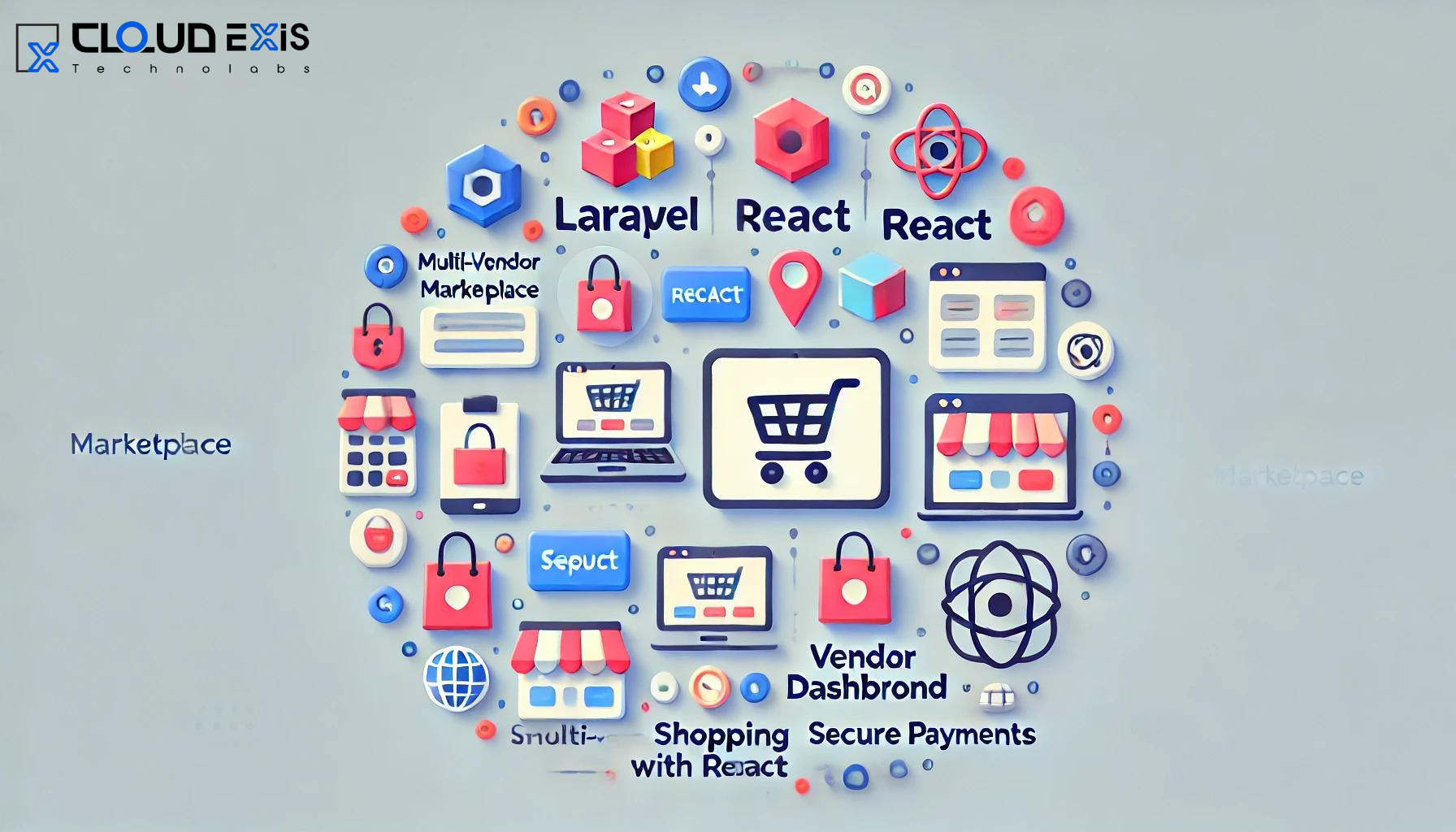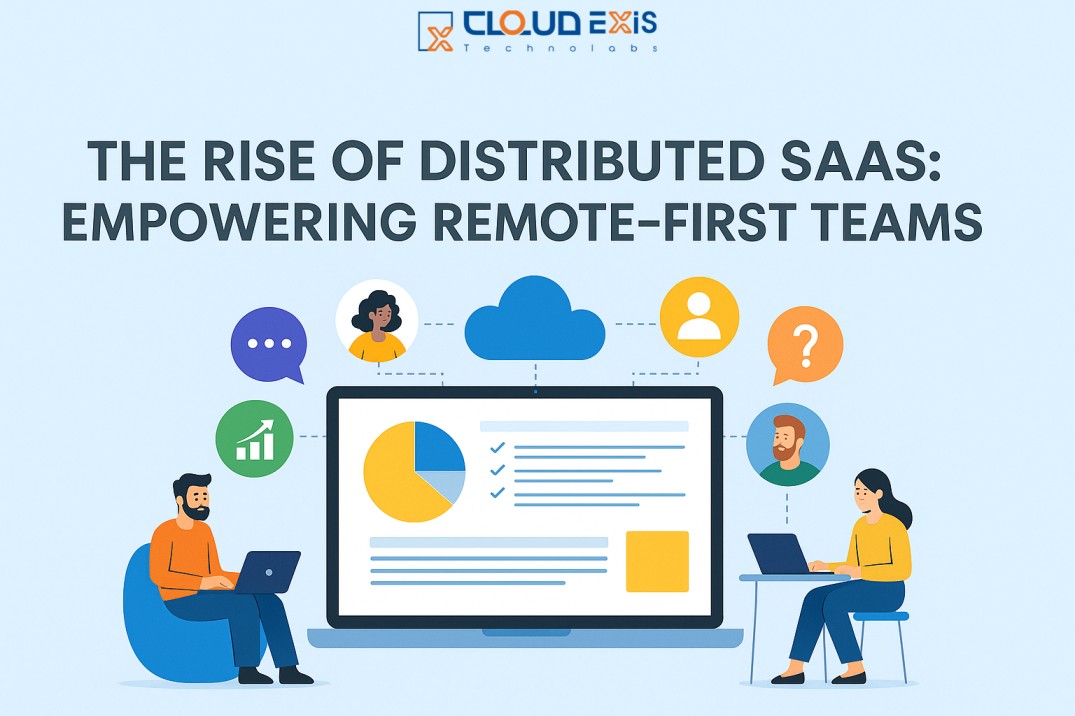Laravel and React remain a powerful combination for building modern web and mobile applications, especially when coupled with AI-driven capabilities. But as technology evolves, so do security threats. Cyberattacks, data leaks, and compromised APIs can destroy user trust and cause massive losses. Whether you’re building a SaaS platform, an AI-enabled product, or a full-stack enterprise system, security must be the foundation of your development process.
This article explores the best security practices for Laravel + React applications, with an added focus on AI development security, ensuring your product is safe, compliant, and resilient.
Why Laravel + React Apps Need Strong Security
Laravel and React provide speed, scalability, and flexibility, but that power also increases the attack surface:
Laravel manages APIs, authentication, business logic, and databases, making it a prime target for backend exploits.
React controls the user interface, token storage, and client-side rendering, which are prone to front-end threats like XSS or data exposure.
AI modules introduce new risk vectors: exposed API keys, insecure prompt injection, data leakage, and unverified model responses.
Hence, a secure Laravel + React architecture must be holistic, protecting every layer backend, frontend, and AI pipeline.
1. Keep Laravel, React, and Dependencies Updated
Outdated frameworks and libraries are one of the easiest entry points for hackers. Dependency-based attacks are increasing due to open-source vulnerabilities.
Always update Laravel, React, and PHP/Node versions to the latest stable releases.
Enable automatic vulnerability scanning for
composerandnpmdependencies.Avoid unverified third-party packages. Use only trusted, frequently maintained repositories.
Run “composer audit” and “npm audit” monthly to detect known CVEs.
Regularly update your AI SDKs or APIs (e.g., OpenAI, Hugging Face, TensorFlow.js) to close any security loopholes.
2. Secure Configuration and Environment Management
Misconfigured environments are a silent killer in Laravel app security.
Never expose your
.envfile or store it in version control.Set
APP_ENV=productionandAPP_DEBUG=falsein live environments.Use strong random
APP_KEYvalues.Limit file and directory permissions to only the necessary folders (like
/storageand/bootstrap/cache) should be writable.Store environment secrets (API keys, AI credentials, SMTP details) in secure vaults or secret managers instead of plain text.
Encrypt environment variables where possible.
For AI-based systems, ensure model API keys or access tokens are never visible on the client side. All AI requests should pass through the backend (Laravel) for controlled access.
3. Enforce HTTPS and Secure TLS
Every request between your React frontend, Laravel backend, and AI endpoints must be encrypted.
Enforce HTTPS using middleware and server configurations.
Redirect all HTTP requests to HTTPS.
Use modern TLS protocols (preferably TLS 1.3).
Configure
Strict-Transport-Security (HSTS)headers.Enable SSL pinning if your app has native mobile components.
When using AI APIs, connect via SSL-secured endpoints only.
Encryption ensures that even if attackers intercept traffic, they can’t read sensitive tokens or AI responses.
4. Implement Strong Authentication and Authorization
Laravel’s built-in authentication system is robust, but must be hardened for API-based setups with React frontends.
Use Laravel Sanctum or Passport for secure token-based authentication.
Enforce multi-factor authentication (MFA) for admin and developer accounts.
Keep password hashing with bcrypt or Argon2; avoid custom algorithms.
Apply role-based access control (RBAC) and policies to restrict features by user type.
Never rely on the React UI alone for authorization backend verification is mandatory.
Protect routes using
auth:sanctumorauth:apimiddleware.
For AI-enabled apps, restrict who can call AI endpoints. Create separate roles (e.g., “AI Analyst”, “Data Admin”, “User”) with specific access permissions.
5. Validate and Sanitize All Inputs
Every piece of user input, whether from forms, APIs, or chat prompts, must be validated.
Use Laravel’s Form Request validation for backend data.
Sanitize all inputs before processing or storing them.
Escape all output using Blade’s
{{ }}syntax to prevent XSS.Avoid using
{!! !!}unless the data is 100% trusted.For React, use controlled components and input sanitization utilities.
Never trust data from the frontend always revalidate on the backend.
For AI apps, sanitize user prompts and remove any malicious injections (e.g., “ignore previous instructions”) to prevent prompt injection attacks.
6. Secure API Endpoints and CORS Configuration
Most Laravel + React setups are decoupled, requiring secure API communication.
Configure CORS strictly to allow only your frontend domain(s).
Disable wildcard origins (
*) in production.Use Laravel’s rate limiting middleware (
ThrottleRequests) to prevent brute force and DDoS attacks.Ensure all APIs use HTTPS and include token or session-based authentication.
Validate
Authorizationheaders on every request.
If your Laravel backend integrates with AI models, make sure:
AI routes are authenticated and logged.
AI responses are filtered for harmful content before being sent to the client.
Tokens for external AI APIs (like OpenAI) are stored server-side only.
7. Prevent CSRF, XSS, and SQL Injection
Classic web vulnerabilities still dominate in 2025, especially when connecting multiple technologies.
Cross-Site Request Forgery (CSRF):
Laravel includes CSRF protection by default for form requests.
For API-based SPAs, disable CSRF but rely on secure tokens instead.
Cross-Site Scripting (XSS):
React escapes content automatically, but you must avoid
dangerouslySetInnerHTML.Use a Content Security Policy (CSP) header to limit script origins.
Filter AI responses before rendering AI text outputs may contain unsafe HTML or URLs.
SQL Injection:
Always use Eloquent ORM or Laravel’s query builder with parameter binding.
Never concatenate user input directly into SQL queries.
8. Secure Token Storage and Session Handling
Tokens are the bridge between Laravel and React if they leak, your system is compromised.
Use httpOnly, secure cookies for storing tokens instead of
localStorage.Set
SameSite=Strictfor cookies to prevent cross-site attacks.Implement short-lived access tokens with refresh logic.
Invalidate tokens upon logout or inactivity.
Encrypt session data in Laravel’s session storage.
For AI-based systems:
Use unique per-user tokens to access AI endpoints.
Track AI request history to detect unusual patterns or abuse.
9. Content Security Policy and Secure Headers
Adding extra layers of browser-level protection is essential for both Laravel and React.
Add middleware in Laravel to send headers such as:
Content-Security-PolicyX-Content-Type-Options: nosniffX-Frame-Options: DENYStrict-Transport-SecurityReferrer-Policy: no-referrer
Restrict third-party scripts and CDN links to trusted sources only.
For React apps, configure a strong CSP in your
index.htmlor deployment server.
For AI chat or content-based systems, prevent the browser from executing AI-generated code snippets.
10. Logging, Monitoring, and Error Handling
Visibility is key for long-term Laravel app security.
Disable debug mode in production.
Log failed logins, invalid API access, and permission errors.
Use centralized log management (e.g., Laravel Telescope, Monolog, or ELK stack).
Enable alerts for suspicious activity (multiple failed logins, excessive API hits).
Mask sensitive data in logs (passwords, tokens, AI keys, user messages).
AI systems should additionally:
Log every AI prompt and response securely (with anonymization).
Track prompt frequency to detect abuse or spam.
Retain minimal data to comply with privacy regulations (GDPR, HIPAA, etc.).
11. Secure Deployment and Infrastructure
Security doesn’t stop at code your hosting and deployment strategy matter too.
Deploy using CI/CD pipelines with security scans (GitHub Actions, GitLab CI).
Restrict SSH access with keys and 2FA.
Use firewalls, WAFs, and DDoS protection.
Run Laravel under a non-root user.
Store backups in encrypted storage (S3 with SSE, Google Cloud KMS, etc.).
Keep database and queue services private (no public access).
Rotate secrets regularly.
For AI microservices:
Containerize AI models with limited resource access.
Restrict outbound traffic from AI servers.
Validate model outputs before serving to users.
12. Protect Against Supply Chain and Dependency Attacks
Third-party libraries can contain malicious code or vulnerabilities.
Audit all open-source packages before installation.
Avoid installing unnecessary dependencies.
Sign and verify Docker images or CI pipelines.
Monitor your npm and composer dependencies for unusual updates.
Keep AI dependencies sandboxed in separate environments if possible.
13. Implement Role-Based AI Access and Data Governance
If your Laravel + React app includes AI features (e.g., chatbots, recommendations, analytics), you must define how users interact with those features.
Limit who can query or train AI models.
Apply data access control, users should only access their own records or AI insights.
Encrypt stored AI training data and anonymize sensitive content.
Prevent AI systems from retaining identifiable personal data.
Review AI outputs for bias, toxicity, or hallucination before using them in production.
14. Build a DevSecOps Culture
In 2025, security is everyone’s responsibility, not just the security team’s.
Integrate code scanning, static analysis, and vulnerability tests in your CI/CD pipeline.
Use automated tools like PHPStan, ESLint, or SonarQube for secure code reviews.
Conduct penetration testing regularly.
Educate your team on secure coding, phishing prevention, and AI ethics.
Create internal playbooks for incident response and token rotation.
15. Backup, Disaster Recovery, and Incident Response
No system is bulletproof, but you can minimize damage through preparedness.
Automate daily database and file backups.
Encrypt backups both at rest and in transit.
Test recovery processes periodically.
Have a clear escalation process for data breaches.
Maintain a versioned rollback system for deployments.
For AI systems, ensure all models can be reverted to stable versions in case of compromise.
Laravel + React + AI Security Checklist
Here’s a quick summary for your team to follow before go-live:
– Laravel Framework
Updated framework and dependencies
.envfile securedHTTPS and TLS 1.3 enforced
CSRF, CORS, rate limiting enabled
Input validation and output escaping
Role-based policies and authentication
Logging and error masking enabled
– React Frontend
Production build with no debug code
Tokens stored in httpOnly cookies
Strict CORS origin
No use of
dangerouslySetInnerHTMLSecure API calls and error handling
– AI Layer
API keys stored only on backend
Input sanitization for prompts
Logging and abuse monitoring
Data anonymization and access control
Output filtering to prevent harmful responses
The Future of Laravel + React Security
In 2025 and beyond, securing a Laravel + React application means adopting zero-trust architecture, continuous monitoring, and AI-aware defense mechanisms.
With AI becoming an integral part of modern systems from chatbots and recommendation engines to predictive analytics, you must treat your AI pipelines like any other sensitive subsystem: protect inputs, sanitize outputs, restrict access, and monitor continuously.
A well-secured Laravel + React + AI stack isn’t just about protection. It’s about building trust, compliance, and long-term scalability.
By applying these security practices consistently, your application will not only withstand modern cyber threats but also earn the confidence of your users and partners. Let’s Innovate






